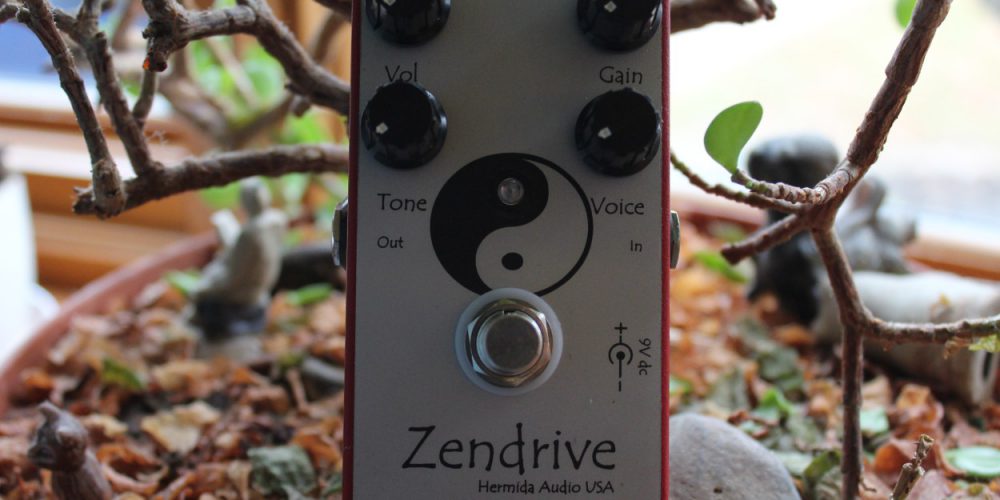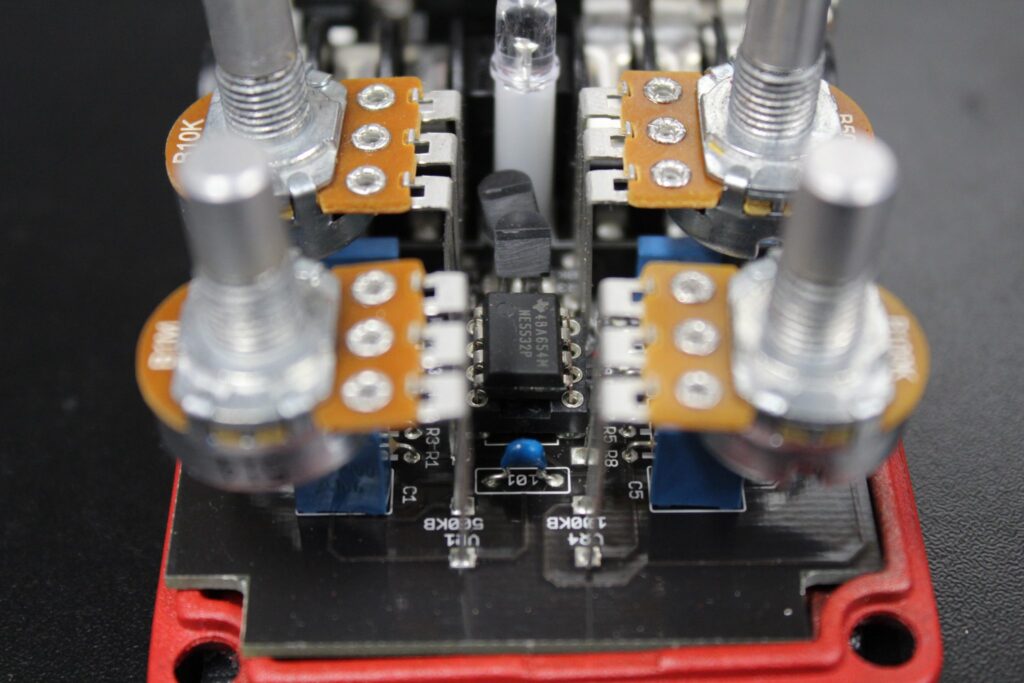
The Hermida Audio Zendrive is based on a classic overdrive circuit with one additional feature: a Voice control. Espoused by guitarists like Robben Ford, Sonny Landreth, and Nalle Colt, the ZenDrive by Hermida Audio continues to live up to overdrive connoisseurs.
In this post, I’ll detail a repair that was done to a Hermida Zendrive, as well as what makes this particular iteration of overdrive circuits unique.
As a member of the Reverb Partner Program and as an Amazon Associate, StompboxElectronics earns from, and is supported by, qualifying purchases.
Disclaimer: Stompbox Electronics and/or the author of this article is/are not responsible for any mishaps that occur as a result of applying this content.
The Hermida Audio Zendrive Overdrive
The Hermida Audio Zendrive is a classic overdrive built around the low-noise NE5532 operational amplifier chip. The Zendrive boasts a unique asymmetrical clipping structure, with a mix of germanium diodes, schottky diodes, and N-channel MOSFET transistors.
The Zendrive Voice Knob
While most overdrives only offer Volume, Gain, and Tone controls, the Zendrive adds a Voice control. The Voice control allows the player to control pre-gain filtering and allows the player to shape the guitar tone prior to amplification.
This is super handy, since it allows the player to control the amount of low-frequency content that gets amplified by the gain stage. Thus, the Voice control relieves the player from relying on the post-gain Tone control for tone-shaping.
In a September 2009 Permier Guitar interview with Alfonso Hermida he explains what the Voice control does in his own words:
. . . It adds or subtracts a little of the bottom end, and at the same time it affects the gain. It makes the knobs interactive—if you add more bottom, it will reduce the gain, but you can turn it back up again with the Gain knob. It is a way of tuning the pedal to your amplifier.
– Alfonso Hermida, Premier Guitar (Sept. 18th, 2009)

Hermida Audio Zendrive Repair
The Zendrive that ended up on my bench today suffered chronic meditation: silence. The pedal was bypassing just fine, but when the pedal was in “effect” mode, there was no output.
After ruling out the 3PDT switch with a continuity check on the multimeter, it was time to focus on the circuit. The circuit is designed around a NE5532 op amp, so that became the next component to check.

Upon opening the backplate of the Zendrive I was surprised to see that the op amp was socketed (thanks, Alfonso!). Most integrated circuits (or chips, as they’re called) are soldered directly to the circuit board. So, instead of going through the trouble of testing the voltage on each op amp pin, I decided replace the op amp with another NE5532 I had on-hand.
As an Amazon Associate, Stompbox Electronics earns from, and is supported by, qualifying purchases:
Luckily, that worked! But I still wanted to test the old op amp. So, I used it to build a simple buffer circuit on a PROTIS 1 breadboard. Sure enough, the op amp’s output and inverting/non-inverting inputs were all stuck at the rails. They were all measured to be 9V when they should’ve been 4.5V (the reference voltage).
Meet the Author:

Hi, I’m Dominic. By day, I’m an engineer. By night, I repair and modify guitar effects! Since 2017, I’ve been independently modifying and repairing guitar effects and audio equipment under Mimmotronics Effects in Western New York. After coming out with a series of guitar effects development boards, I decided the next step is to support that community through content on what I’ve learned through the years. Writing about electronics gives me great joy, particularly because I love seeing what others do with the knowledge they gain about guitar effects and audio circuits. Feel free to reach out using the contact form!
Spotlight
This fix was done for Buffalo-based guitarist Matt Fantini of Space Junk.
The Tools I Use
As a member of Amazon Associates, Stompbox Electronics earns and is supported by qualifying purchases.














